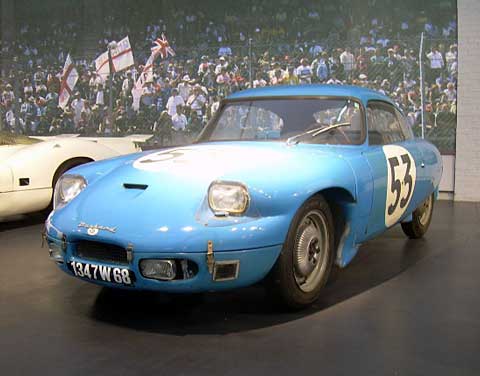
Panhard-Levassor CD Coupe. With only 702 cc, this CD (for Charles Deutsch) coupe won the Index of Performance at Le Mans in 1962 driven by the team of Gilhaudin and Bertaut.
Photos by Lorenzo Marchesini
There are collectors and there are Collectors, those whose passions lead to strange obsessions, like the Asphalt Museum in Sacramento founded by Scott Gordon. On to the median, we can visit Brian and Sue Radam’s British Lawnmower Museum. And if we really want to get nit picky, we can call on Graham Barker, from Brisbane Australia, whose belly button lint collection is the best in the world. But few collections are in the same class as the Brothers Schlumpf.
There is something about a collector–an illness perhaps—that does not allow them to say no, when enough is never enough, when mass overshadows class, when the end is never in sight. In the Schlumpf, there are examples of almost every French car built since the first Panhard-Levassor; enough space was allocated to accommodate a good percentage of the entire population of extant Bugattis, and to see the complete collection would take a week if one was a serious motoring enthusiast. (read Introduction to the Schlumpf)
And we love every wheel of it. For where else in the world can one find Paul Arzen’s Whale, funny fiberglass concoctions like the Alart and the one off Vuillet, the 1948 Dynavia with a lightweight aluminum chassis (take that, Ferrari 360) and the steam powered Serpollet.
They exist today because the Schlumpfs, in their own remarkably sheltered and medieval world, were compelled to satisfy their insatiable desires. And for this, we are thankful.
This week we present a few of the French cars at the Museum, click here to see the Italians at the Schlumpf.
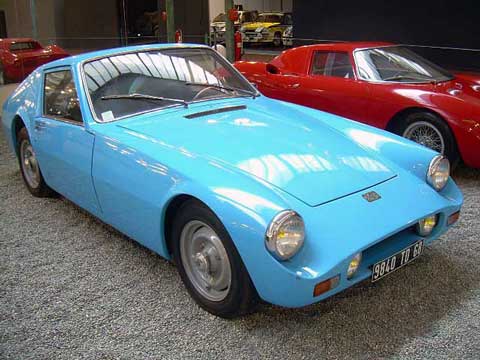
Conceived and built by Andre Vuillet in 1960, this sturdy Peugeot 403 1468 cc four cylinder served as the basis for this sports car named Vuillet after its constructor.
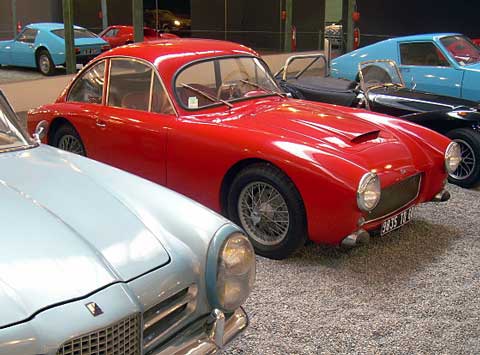
Alart. This neat little one off coupe was built by Marcel Alart, and built in his garage in 1959. It uses a 4 cylinder 1090cc engine based on the Simca chassis and running gear and can do about 100 mph.
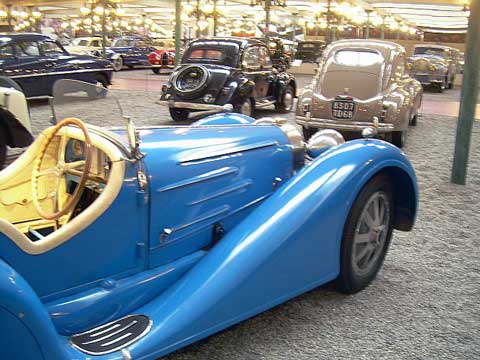
A magnificent pre-war Bugatti in fhe foreground overlooks the more mundane transsportation devices of the post-WWII era.
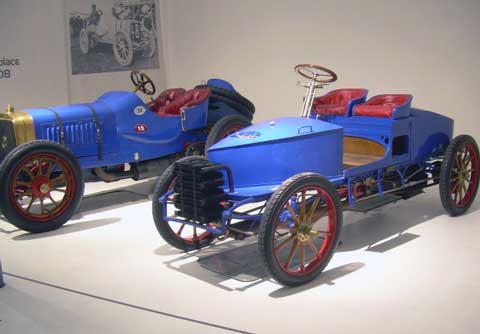
Financed by the American Frank Gardner, the French Serpollet was one of the fast and successful steam cars produced in the early years of the 20th century and finished in third place after Panhard in the 1902 Circuit du Nord.
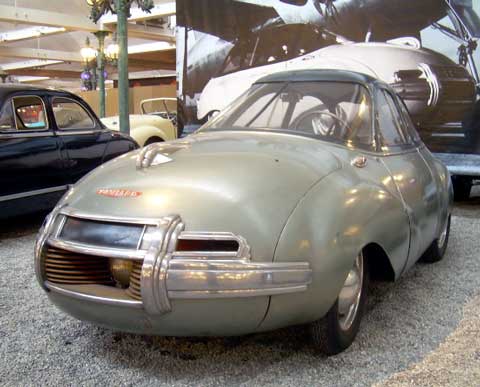
Panhard-Levassor Dynavia. This prototype from 1948 was an experiment in aerodynamic efficiency, using the flat twin 605 cc Dyna Panhard engine. Panhard would continue to build high quality fuel efficient cars until 1967.
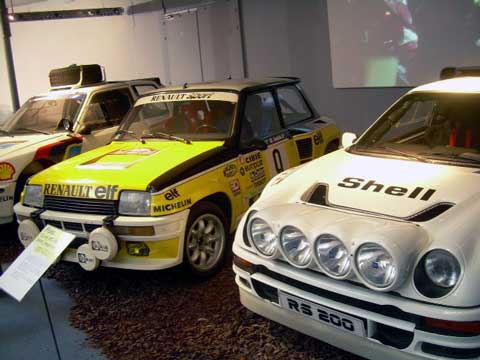
In the center, The Renault 5–known in the U.S. as “Le Carâ€, served as the basis for the fantastic Renault RS Turbo which was a mid-engined 200 hp rocket. This one was driven by Ragnotti and Andrie in the Ralley Montecarlo. At left is a Peugeot 205 Ti and a Ford RS 200 on the right.
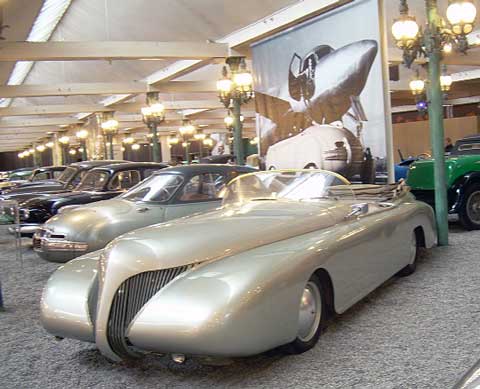
Arzens. French artist and designer Paul Arzens loved both cars and art, so created this 3.5 liter convertible in 1938. He carried his equipment in the huge trunk and used the passenger compartment as a studio. The car was called “La Balleine†(The Whale).
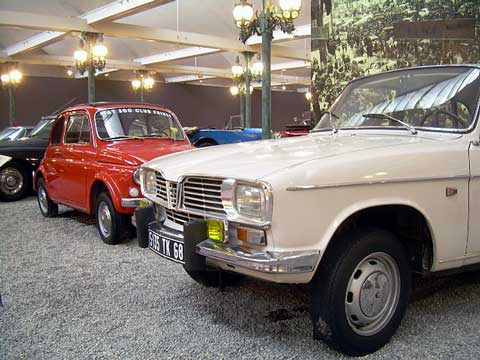
A Fiat 500 sits behind the Renault 16 of the mid 1960s. The 16 featured front wheel drive, a lot of passenger space and a very comfortable ride.
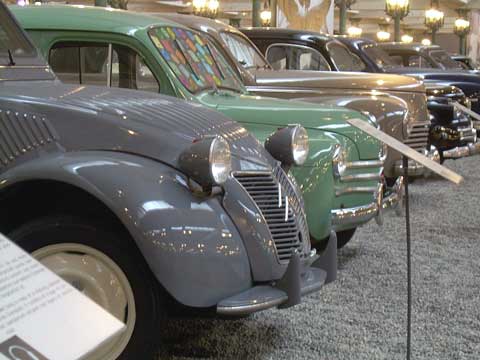
A line up of the post World War II popular French cars includes the front drive Citroen 2CV, rear engine rear drive Renault 4CV, and the front engined rear drive Peugeot 203.
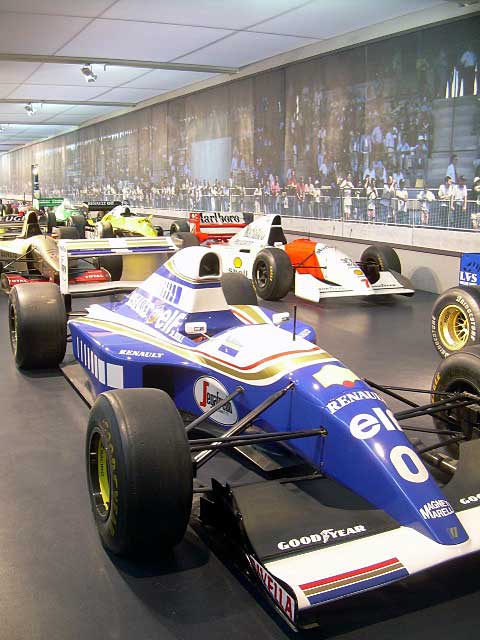 Williams Renault FW 15 C from 1994.
Williams Renault FW 15 C from 1994.
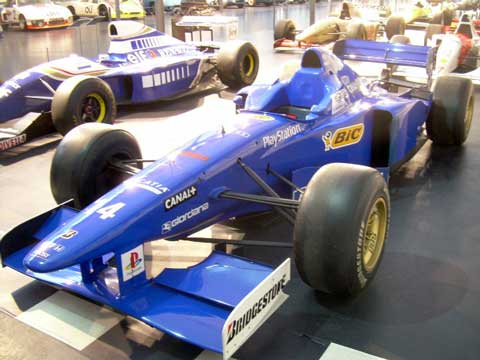 Ligiers JS 45 (Mugen Honda), renamed as a Prost (JS 45) in 1997.
Ligiers JS 45 (Mugen Honda), renamed as a Prost (JS 45) in 1997.
Very nice article. I visited the Schlumpf musuem for the first time last year. I knew it was going to be a special place, but was not prepared for the total magnitude of the size and scope of this collection. I plan to revisit again next year and spend more time there.
Thank you for your story and photos!
John A. Peterson, Les Amis de Panhard et D.B USA
Mister André Guilhaudin was present at Rétromobile in Paris last Friday with some ex DB crews, drivers and enngineers !
Thierry
At R̩tromobile in Autodrome-Paris displayed the famous prototype Panhard-CD 1964, with its incredibly aerodynamic shape, enabling 230 km/h (143 mph) with an engine of only 849 cc. A milestone in modern aerodynamics designed by Charles Deutsch Рfounder of DB, CD, SERA, and designer of the Porsche 917.
dear Mister Levy, hope misters Robert Choulet and Michel Têtu visited your stand ?
As you probably know Mister Choulet works on the CD 64 –> the Matra 640 –> and the Porsche 917 LH.
The first time at the French National Automobile Museum in Mulhouse, I thought I was going to have a coronary. As a Bugatti aficianado, this place was overwhelming. I have since been there another three times, always better than the time before.
When my second daughter was born, instead of the normal Mommy and Daddy words, I figured if she knew the words Ferrari and Bugatti, she would have it made in life. So far, I am not wrong.
Thank you.
Ron